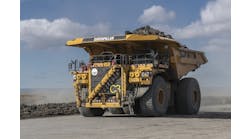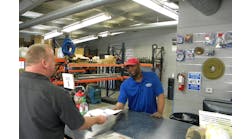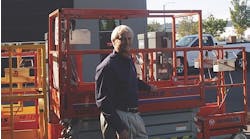In a way, the trench shoring rental business reminds me a bit of the aerial industry. As NTS CEO Ron Chilton says, his company’s biggest competitor is ignorance. As you’ll read about in the story, Chilton often feels compelled to stop while driving down the road because he sees people in a ditch doing something unsafe. Is he interested in winning their business? Yes of course. But he also doesn’t want to see someone get injured or killed because they are doing something unsafe. So he stops and explains to those workers how the walls of that trench could collapse on them.
I’ve had aerial rental specialists tell me similar stories about sometimes stopping because they see somebody on a ladder resting on the branch of a tree — or something similarly unsafe — and they want to stop and educate the person about how an aerial work platform could save them from danger.
People entering the unstable trench often say “I’ll only be in it for a few minutes,” and I’ve heard the same thing from people who should be using aerial work platforms. It will just take a minute to put this ladder on top of this ledge here and climb up and do whatever. A few minutes doing something unsafe is no less dangerous than doing it for an hour or doing it all day, because a serious accident can only take a second too.
Not many of you in the rental business are trench-shoring experts. I know I certainly couldn’t tell somebody when they should use a slide-rail system or when a beam-and-plate system would be most effective or a modular aluminum box. But I could recognize if somebody is in a place they shouldn’t be. Similarly, I wouldn’t always be able to recommend what kind of aerial work platform somebody should use for a particular job, but I know enough to be able to give them a phone number to call.
Aerial work platforms have only been around a few decades, but they are now very widespread and in the inventory of thousands of rental companies. Yet, one still sees amazingly dangerous practices by people who, one would think, would be smart enough to know better. Trench-shoring equipment is not as widespread, but the ignorance certainly is.
People who rented and sold aerials when those machines were a new invention had the experience of going around opening peoples’ eyes to what these machines could do, demonstrating them to people who had never seen them before.
Trying to combat the ignorance about the importance of shoring is probably not as much fun, but it’s very much necessary.
Trench shoring is not a glamorous industry. As the guys from NTS say, they go for the big, ugly, dirty, mean, nasty-looking jobs. Their sales staff probably won’t be giving seminars on sales techniques, but they have expertise in a highly specialized field.
A lot of companies have tried trench shoring but don’t have the product knowledge. The NTS folks have decades of experience and that is key to their success. You can build your contacts, stay in front of your customers, and use tablets and iPhones but if you don’t know each product and what it will do or not do, and how to engineer the solutions, you won’t last long at it.
Our conversations with rental people indicate we’ll see a good bit of equipment buying this year as the economy continues to show signs of improvement. Rental companies tend to be looking to buy because their customers are more active and they are in more of a growth mode. Also after years of aging their fleets, the need to replenish and replace is strong.
Housing is coming back, so is commercial construction. Maybe not as robust as it once was, but the direction is more positive. While credit may not be flowing as freely as it was during the peak years of the last decade, there certainly are plans available to fit different budget levels (check out Harry Schneider’s comments on this topic on pages 39-40).
And if you are reading this at the Rental Show, please stop by Booth 742 and pay us a visit. rer







